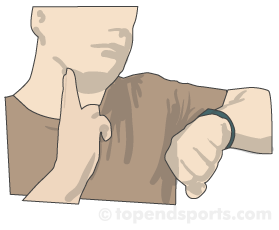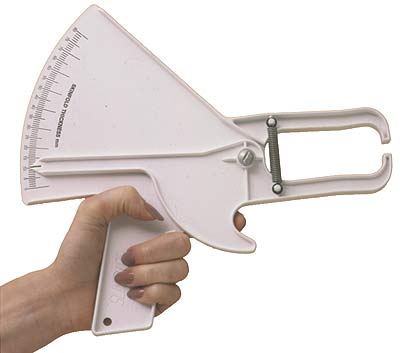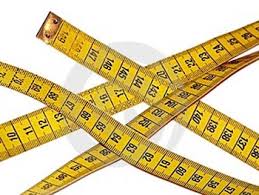The 4 different aspects that I have measured are:
- Heart rate
- Lung function
- Blood pressure
- Body fat percentage
- Height/Weight
To measure each of these I used different tests such:
- Heart rate (Check pulse on neck/wrist per minute)
- Lung function (Total breathes per minute)
- Blood pressure (Heart rate monitor)
- Body fat percentage (Callipers)
- Height/Weight (measuring tape/weighing scale)
Heart Rate (Neck/Wrist pulse per minute)
To measure your heart rate you don't even need any equipment all you need to do is find your pulse on your neck usually under your jaw or right under your wrist. Then when you found your pulse count your pulse for 1 minute straight. Even though this test will measure your heart rate per minute it wont be as accurate. To make it accurate you can use a heart rate monitor which will be much more accurate and give you the right reading.


For my contrasting individuals I used the heart rate monitor to get a more accurate result.
The results:
Elliot: 75bpm
John: 65bpm
The national average for men is from around 60 to 80 bpm which shows us that Elliot and John are both on a good level of fitness.
Lung Function (Breathes per minute test)
The other aspect I decided to measure was their lung functions to see how their lungs are working and what's the difference between these two contrasting individuals. To measure the lung function I used a really easy method which is called the breathes per minute test to measure the respiratory rate. All you have to do in this test is ask your client to stand up rest your hand against their chest and count the amount of times their chest rises in the space of one minute and record their result at the end.
The results for my contrasting individuals:
Elliot: 22bpm
John: 24bpm
The national average for men on the respiratory rate is from 18-20 breathes per minute which shows us straight away that Elliot and John's respiratory rate is a bit to high which could mean that they need to work on their respiratory system.

Blood Pressure (Heart rate monitor)
Another thing that I have measured is the blood pressure by using the heart rate monitor. It is a really easy procedure however, you must have the heart rate monitor to be able to do this test. When you have the equipment wrap it around your wrist press the start button and relax yourself. When the test is finished record what results you have gotten. You should record both results the SYS and the DIA.

The results:
Elliot: SYS:159 DIA: 172
John: SYS:164 DIA: 142
The national average for men is usually SYS:120 DIA:80 which shows us that Elliot and John's blood pressure is a bit too high. High blood pressure can be a result of not exercising enough, being overweight, smoking, diabetes, high cholesterol etc.


Body fat % (Callipers)
The last monitoring test that I have done on the two contrasting individuals is the body fat percentage test using the callipers. It is quite an easy test to carry out. First you want to measure the fat in cm on your triceps then on your hip and then on your back under your scapula. Do this test 3 times add up your results and divide them by 3 to get a average. Turn your average into a percentage and this will be your body fat percentage.


The results:
Elliot: 6.6%
John: 11%
In the national averages a healthy body fat percentage would from 8% to 19% as we can see from my results Elliot's body fat percentage is too low which means he should gain on mass and by looking at John's body fat percentage we can see that his fat percentage is healthy.
Height/Weight (Measuring tape/weighing scale)
To measure the height and weight of my contrasting individuals I have used a measuring tape for the height (cm) and a weighing scale for the weight of my individuals in (kg). It is a really easy test to carry out because all you need is a measuring tape and a weighing scale. To measure your height just stand next to a wall and get some one to measure your height from the peak of your head to the ground. Remember dont wear shoes during this test because it could make your result inaccurate. For the weighing scale test just stand on it and record what result you got on the weighing scale in kilograms.


The results for height:
Elliot: 171cm
John: 182.2cm
As you can see the height difference between these two individuals is 11.1cm difference which means that John can have more mass than Elliot because Elliot is smaller in height.
The results for weight:
Elliot: 61.4kg
John: 80kg
By looking at the results we can see that Elliot has much less mass than John as he is 21.4kg's lighter this means that he might need different exercises than John to increase body mass.
As you can see the height difference between these two individuals is 11.1cm difference which means that John can have more mass than Elliot because Elliot is smaller in height.
The results for weight:
Elliot: 61.4kg
John: 80kg
By looking at the results we can see that Elliot has much less mass than John as he is 21.4kg's lighter this means that he might need different exercises than John to increase body mass.
Here are the overall averages for different body measurements for height and weight. This is called a BMI chart which will calculate your height and weight and tell you if you are underweight, ok, overweight, obese or clinically obese.

